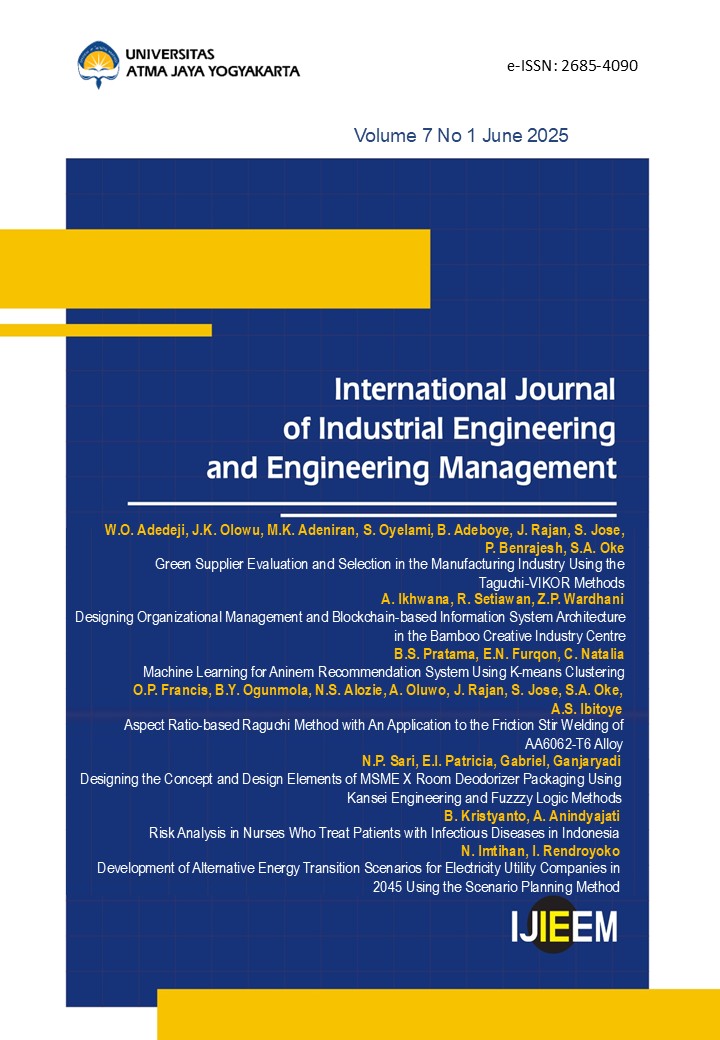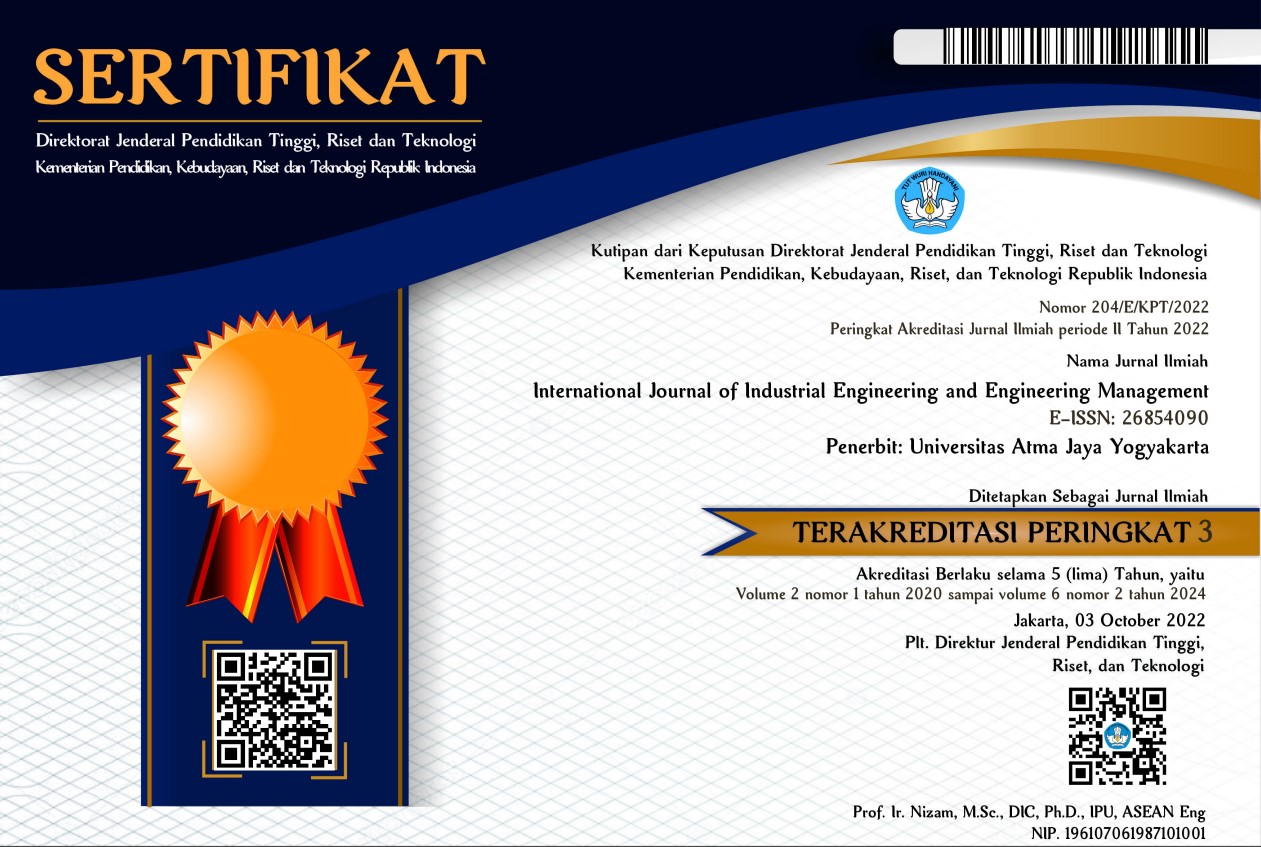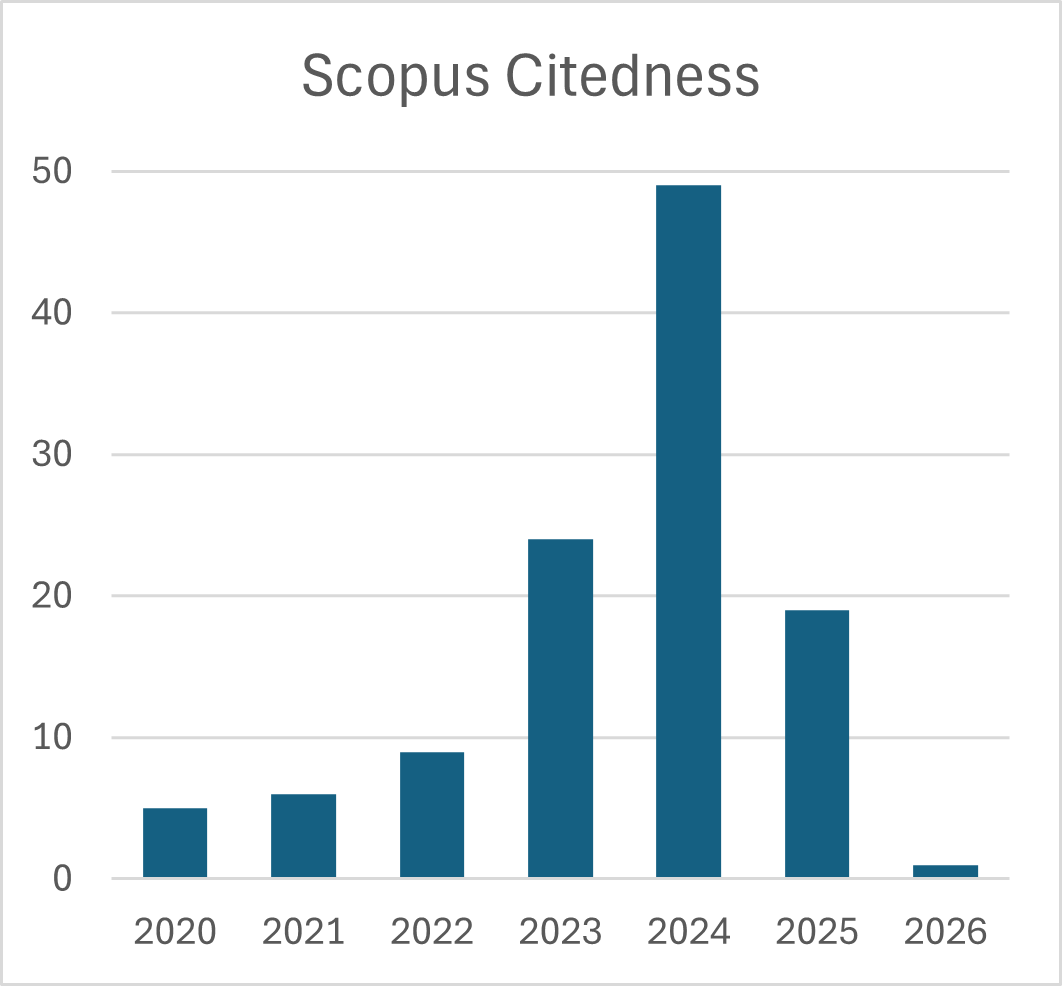Development of Alternative Energy Transition Scenarios for Electricity Utility Companies in 2045 Using the Scenario Planning Method
DOI:
https://doi.org/10.24002/ijieem.v7i1.10125Keywords:
electricity utility, energy transition, scenario planning, strategy, uncertaintyAbstract
In implementing the energy transition, electricity utility companies must be able to carry out future planning to replace electricity infrastructure from a fossil energy-based generation system to clean energy generation and new renewable energy (NRE) to achieve Net Zero Emission (NZE) conditions by 2060. Term planning. What has often been done so far is to use forecasting methods, which are made by utilizing historical databases and using many assumptions about economic, social, and environmental conditions, as well as other factors that are easily changed and close to uncertainty. Therefore, planning methods must consider possible changes and uncertainties with several possible scenarios. Scenario planning is planning with a strategic approach that focuses on the process, involving finding optimal strategies for several scenarios that can occur, and this method helps deal with uncertainty. This paper explores the development of alternative scenarios that may occur in 2045, using scenario planning to help electricity utility companies capture opportunities and offset threats. It focuses on formulating broad and innovative strategies for the energy transition in the electricity business.
References
Ahmadi, H., Sunitiyoso, Y., & Wicaksono, A. (2023). Scenario Planning of PLN Indonesia Power in 2030: To Be a Leading Green and Sustainable Power Generation Company. European Journal of Business and Management Research, 8(4), 129-139.
Athuraliya, A. (2022). A step-by-step Guide to Scenario Planning. Retrieved July 2024, 1, from https://www.professionalacademy.com/blogs/a-step-by-step-guide-to-scenario-planning/
CIPD (2024). PESTLE Analysis. Retrieved August 8, 2024, from https://www.cipd.org/uk/knowledge/factsheets/pestle-analysis-factsheet/#what-is-a-pestle-analysis
Clemen, R. T., & Reilly, T. (2013). Making Hard Decisions: An Introduction to Decision Analysis 3rd Edition. Cengage Learning.
Cornelius, P., Putte, A. V., & Romani, d. M. (2005). Three Decades of Scenario Planning in Shell. California Management Review, 48(1), 92–109.
Future Station (2024). Future Preparedness through Foresight. Retrieved August 6, 2024, from https://futurestation.ro/future-preparedness-through-foresight/
Kanugrahan, S. P., & Hakam, D. F. (2023). Long-Term Scenarios of Indonesia Power Sector to Achieve Nationally Determined Contribution (NDC) 2060. Energies, 16(12), Article 4719.
Kappner, K., Letmathe, P., & Weidinger, P. (2023). Causes and effects of the German energy transition in the context of environmental, societal, political, technological, and economic developments. Energy, Sustainability and Society, 13(1), Article 28.
Kiswantono, A., & Shoedarto, R. M. (2023). Indonesia's Energy Transition Preparedness Framework Towards 2045. Jakarta, Indonesia: BRIN Publishing.
Paiboonsin, P., Oluleye, G., Howells, M., Yeganyan, R., Cannone, C., & Patterson, S. (2023). Pathways to Clean Energy Transition in Indonesia’s Electricity Sector with Open-Source Energy Modelling System Modelling (OSeMOSYS). Energies, 17(1), 75.
Quiceno, G., Álvarez, C., Ávila, R., Fernández, Ó., Franco, C. J., Kunc, M., & Dyner, I. (2019). Scenario analysis for strategy design: A case study of the Colombian electricity industry. Energy Strategy Reviews, 23, 57-68.
Rachmatullah, C., Aye, L., & Fuller, R. (2007). Scenario planning for the electricity generation in Indonesia. Energy Policy, 35(4), 2352-2359.
Resmisari, A., & Patria, H. (2021). Scenario Planning Approach in Attaining Business Sustainability of PT Gas Transmission Pipeline. Proceedings of SCIENCEFORA International Conference. Singapore.
Robinson, J. B. (1988). Loaded questions: New approaches to utility forecasting. Energy Policy, 16(1), 58-68.
RUN iProbe. (2023). Scenario Planning. Retrieved June 19, 2024, from https://broadwayshr.com/blog/scenario-planning-adalah/
Schwartz, P. (1991). The Art of The Long View. New York: Double Day.
Sihombing, M. (2013). Kiat Manajemen: Harus Beradaptasi dengan Ketidakpastian. Retrieved June 20, 2024, from https://entrepreneur.bisnis.com/read/20130523/237/140658/kiat-manajemen-harus-beradaptasi-dengan-ketidakpastian
Soontornrangson, W., Evans, D., Fuller, R., & Stewart, D. (2003). Scenario planning for electricity supply. Energy Policy, 31(15), 1647-1659.
Spitz, R. (2024). Why shifting from prediction to foresight can help us plan for future disruption. Retrieved August 7, 2024, from https://www.weforum.org/agenda/2024/05/prediction-foresight-planning-future-disruption/
Tambunan, H. B., Hakam, D. F., Prahastono, I., & Pharmatrisanti, A. (2020). The Challenges and Opportunities of Renewable Energy Source (RES) Penetration in Indonesia: Case Study of Java-Bali Power System. Energies, 13(22), Article 5903.
Taylor, A. (2017). Scenario Planning for an Uncertain Future. Retrieved June 26, 2024, from https://www.smestrategy.net/blog/scenario-planning-in-an-uncertain-future
Tsetsos, D. (2023). Scenarios for the effects of climate change on security policy in Germany. Germany: Metis Institute for Strategy and Foresight.
UN Environment Programme Finance Initiative (UNEP FI). (2024). Scenarios for Assessing Climate-Related Risks - New Short-Term Scenario Narratives by UNEP FI and NIESR. USA: United Nations Environment Programme Finance Initiative.
Varum, C. A., & Melo, C. (2010). Directions in scenario planning literature – A review of the past decades. Futures, 42(4), 355-369.
Walker, W. E., Rahman, S. A., & Cave, J. (2001). Adaptive policies, policy analysis, and policymaking. European Journal of Operational Research, 128(2), 282-289.
Wilkinson, A., & Kupers, R. (2013). Living in the Futures. Harvard Business Review, 91(5), 118-127.
Zhao, F., Bai, F., Liu, X., & Liu, Z. (2022). A Review on Renewable Energy Transition under China’s Carbon Neutrality Target. Sustainability, 14(22), Article 15006.
Downloads
Published
How to Cite
Issue
Section
License
Copyright (c) 2025 Najahul Imtihan, Ignatius Rendroyoko

This work is licensed under a Creative Commons Attribution 4.0 International License.








